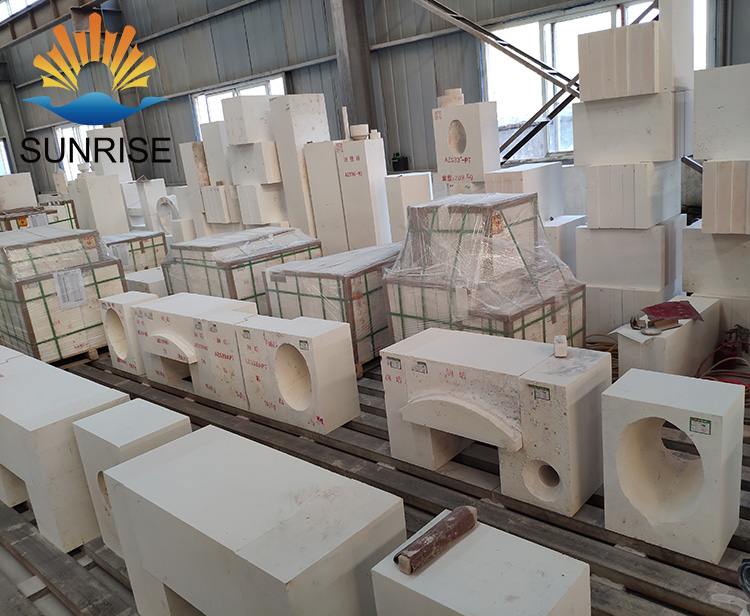Alteration of fused zirconium corundum brick in glass furnace
2020-04-10
The fused cast zirconia corundum (AZS) bricks are mostly used in the parts with high temperature in the kiln and the parts seriously eroded by the glass liquid. Different brick models are usually marked by the amount of ZroZ. The brick is mainly composed of a-corundum, two crystal phases of multiple pieces of stone and glass phase. Oblique zircon and a-corundum are eutectic, and the rest are free. The corrosion resistance of these two crystal phases is side-by-side, and the two crystal phases are closely bound, and the structure is uniform and dense, so the corrosion resistance is stronger.
Because of the small amount of NaZ attracted in the brick. This makes the mullite crystallizing area narrow, and the mullite crystal phase is difficult to precipitate, and the glass phase is filled between the crystal phases. This glass phase is eroded by high-temperature glass liquid to form a more private soda feldspar glass, which has a greater viscosity due to a certain amount of ZrO2 dissolved therein. This layer of high-viscosity glass remains on the surface of the brick and is not easily diffused, thus protecting the brick body. If the crystal of the brick is coarse, it is not easy to form a high-viscosity layer after being eroded, and the glass liquid will easily penetrate into the brick and erode the brick quickly.
The alteration process of zirconium corundum bricks is that the molten glass bricks interact with the glass phase existing in the bricks and gradually diffuse and dissolve. After that, a-corundum and monoclinic zircon in the brick slowly dissolved in sequence. The viscosity of the glass liquid near the surface of the brick increases, forming a protective layer against erosion. At the same time, the metasomatic reaction will produce corundum, nepheline, skeletal zircon and so on.

Generally, the glass liquid in the metamorphic layer of the brick near the upper liquid surface of the pool wall has clearly penetrated into the brick body, but the corundum and oblique zircon eutectic are still connected by the remaining glass. The brick on the lower part of the pool wall has a corundum, slanting stone and turbid glass phase. Due to the reaction of the glass phase and the glass liquid in the brick, a nepheline liquid phase is formed, which dissolves part of the haoysite and forms a high anvil Degree metamorphic layer. When the temperature decreases, the dissolved ZrOZ will precipitate star-shaped or dendritic crystals, which is secondary crystallization.
In the high-privacy layer at the lower part of the pool wall, the secondary crystals of the surviving stone and the nepheline crystal coexist. With the prolonged use time, these two crystal phases may be taken away by the glass liquid flow, and then further diffuse into the glass liquid. The stone that is more difficult to melt may partially dissolve and remain in the glass liquid as stones in the finished product.
